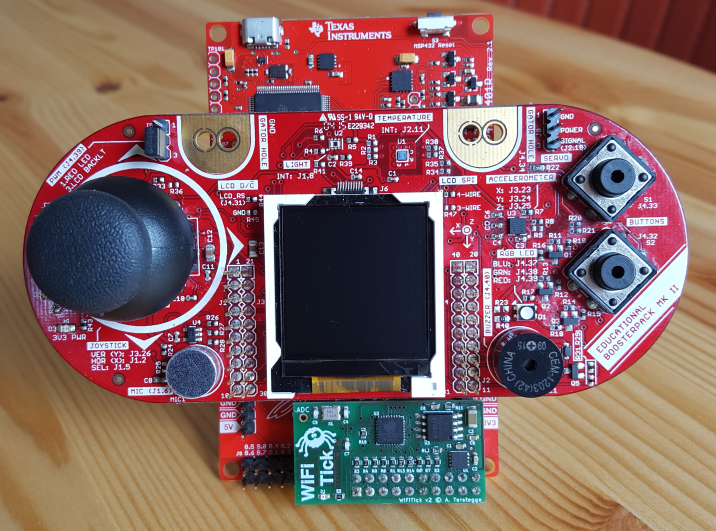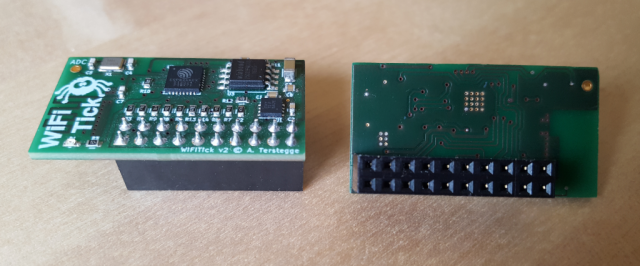Small ESP8266-based WLAN board for the MSP432 launchpad.
Here you see WiFiTick attached to the MSP432 launchpad with an additional EDU MKII booster pack above:
WiFiTick front and back view:
WiFiTick is a small add-on board for the MSP432 lauchpad from Texas Instruments. The MSP432 launchpad is a nice microcontroller board with a Cortex M4F processor and a on-board debug facility. WiFiTick adds WiFi functionality to the lauchpad, using a ESP8266, which is a cheap but very powerful WLAN-enabled microcontroller from Espressif.
Texas Instruments have their own WiFi solution (e.g. the CC3100 booster pack). But these boards have to be disconnected from the lauchpad when you want to flash a new firmware to the WiFi board. This makes it a little bit unhandy for students.
WiFiTick has the following features:
- Low cost - ideal for WiFi enabled student projects (WiFi client and WiFi access point modes available)
- 4 MiB flash, so lots of space for ESP8266 programs and embedded file systems (SPIFFS)
- Integrated PCB antenna
- Single 5V power supply (via USB/launchpad). There is a separate 3.3V regulator on the board.
- No interference with other booster packs, because the additional horizontal header of the MSP432 lauchpad is used
- No need to disconnect from launchpad: With a special software, the MSP432 launchpad serves as a programming adapter (via a UART interface). This software features automatic baud rate control, so boot messages of the ESP8266 are readable.
- Easy programming of ESP8266 with Arduino IDE
- Full control of the ESP8266 from MSP432 side. The MSP432 can ...
- Reset, Power up/down or wake up the ESP8266
- Communicate with the ESP8266 via SPI (or any other protocol - there are 8 GPIOs plus the programming UART available for data exchange).
- Additional ADC input pad for the ESP8266
- User-controllable LED on the board (can e.g. simulate the behaviour of the LED on the well-known ESP-12E/F boards)
This project contains the hardware design files, which were developed using KiCad EDA. The related software will be published in a separate project.

